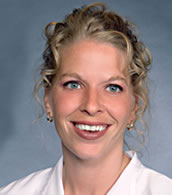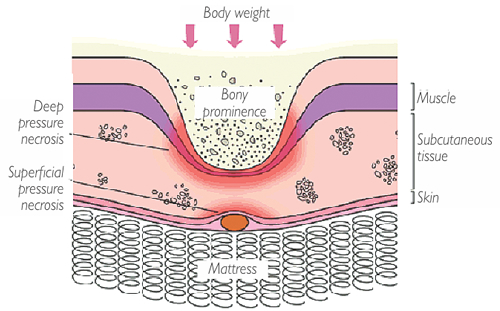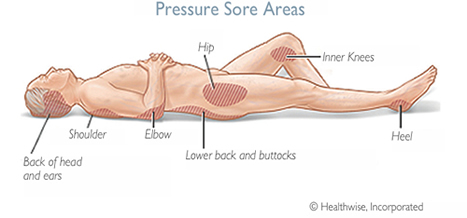|
Can’t Handle the PressureKristine Reesman, DO Skin is our body’s largest organ. Unfortunately, like other organ systems, it sometimes fails. All too often following a period of significant illness or extended weakness, skin breakdown ensues. Prolonged periods in bed, or even sitting in a chair, can result in injury to our skin and underlying tissues. Normally, blood carrying oxygen and nutrients continually circulates through our tissues. When a person is confined to a bed or chair due to illness or debility, the tissue over boney areas such as the hips or tailbone experiences reduced blood flow. The circulation is literally pinched off because of this pressure and the result can be skin breakdown or “pressure ulcer”. Pressure ulcers are sometimes referred to as “bedsores” because they often are associated with prolonged bed rest.
Pressure ulcers occur at any age and equally among men and women. They most commonly occur in the elderly or those who have experienced prolonged illness. The average medical cost of managing a severe pressure ulcer in the United States is approximately $129,000. The social and emotional costs of severe ulcers are immeasurable, and include significant financial burden for families due to absence from work. It is imperative whenever possible that pressure ulcers be prevented. If unavoidable, early management of the patient to avoid devastating complications should be utilized. Those at risk for developing pressure ulcers include:
If a person is identified as at risk, attention must be taken to avoid pressure ulcers. Measures to prevent skin breakdown include:
Redness over a boney area present after prolonged pressure should resolve in less than 20 minutes once the pressure is removed. If the redness persists, it is quite possible that a pressure ulcer has developed and subsequently must be protected and pressure avoided.
If someone you know has, or is at risk for a pressure ulcer, or if you would simply like more information, many resources are available. Speak with your primary physician or contact OakLeaf Advanced Wound Care and Hyperbaric Medicine Center directly at 715.839.6869. Any member of our team would be happy to help you
Dr. Reesman – OakLeaf Clinics SC – Eau Claire Medical Clinic |




